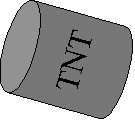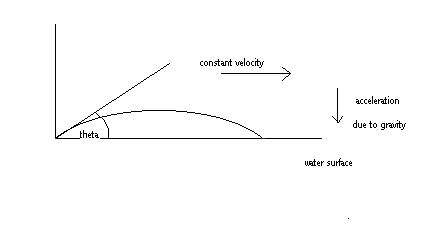
The Bouncing Bomb

Cylindrical in shape, the bouncing bomb, also known as Highball, designed by Barnes Wallis measured 60 inches long and 50 inches in diameter. It contained 3 hydrostatic pistols, which measured the hydrostatic pressure of the water as the bomb sank, until it was equal to the pressure corresponding to 30 feet depth. The bomb was also fitted with a 90 second time fuse so that if the hydrostatic mechanism failed, the bomb would still detonate. The bomb weighed a total 9,250lb, 6000lb of this weight being explosive charge of TNT and RDX and possibly other materials to improve the efficiency of the explosion.
Before being released from specially modified aircraft, the bombs were held by v-shaped arms in the plane and rotated to the speed of 500 rpm by a hydraulic motor and belt drive. The planes had to fly at the low height of 60 feet and to be travelling between 240-250 mph. To help the aircrews obtain these specifications, two spotlights were fitted to the undercarriage of the plane and positioned so that they converged into one at exactly 60 feet.

The speed and height the bombs were dropped at was critical in order for the bomb to reach its target. The bomb hit the water with some backspin and this, with the angle it bounced off the water at, would help determine the length of a bounce.

The diagram above shows how and why the bomb bounced and how the angle theta and the velocity of the bomb would affect the distance of the water surface covered in each bounce. The bomb really needed to hit the dam and spin down to the very bottom of the structure at the right speed in order for this to actually happen. The bomb was also required to either be at the right height or at a fast enough speed to jump over or break through the defensive netting employed by the Germans.
